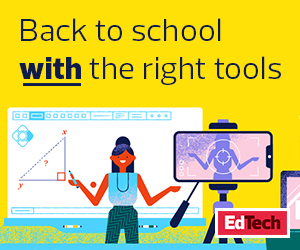Picking the Right Tools to Assess Students’ Knowledge
Just south of Seattle in Washington state, educators at Highline Public Schools worked intensely this summer in collaboration with the nonprofit TNTP to prepare for “distance learning 2.0,” says Rebekah Kim, the district’s executive director of teaching, learning and leadership.
Highline, which enrolls about 19,000 students, trained teachers on four core platforms: Zoom for daily live instruction, Screencastify for asynchronous learning, Seesaw as an elementary learning platform and Google Classroom for secondary students. All four will be used together for simple formative assessments: Younger students can watch a recorded session on Screencastify and submit a reflection in their Seesaw journals, for example. In addition, tracking student attendance on Zoom is considered another form of assessment, Kim says.
READ MORE: Find tips for teaching pre-K–6 students online.
The district is prioritizing ongoing student assessments and a diagnostic test conducted with the program i-Ready, as well as collaborative professional development, to address what it refers to as students’ “unfinished learning” due to the pandemic.
“We don’t want to have a fixed mindset of, ‘We know it’s learning loss and it’s going to be pretty prominent all over the country and our world right now,’” Kim explains. “We call it ‘unfinished learning’ to have a growth mindset.”
Meanwhile, to gauge students’ knowledge of the curriculum pre- and post-lesson, social studies teacher Micah Shippee uses Google Forms to conduct informal surveys with yes/no or multiple-choice answers. Shippee, who teaches at Liverpool Middle School in central New York, also has his students complete Adobe’s free, five-minute quiz on creativity types to get insights on how to be productive based on individual learning styles. Shippee uses students’ quiz results to inform how he assembles them during small group sessions, which can work in-person or in online breakout rooms.
Shippee, who is also an educational technology learning consultant, says he uses the app Pear Deck for Google Slides to drag and drop microassessment tools, such as interactive maps or a mood check-in, on the slides he shares with students.
DISCOVER: How can educators improve remote learning experiences?
With Data Analytics, Educators Pinpoint Academic Struggles
GoGuardian is another go-to tool for Highline and Liverpool Central School District. The platform allows educators to track activity on students’ screens in real time.
Shippee says he used the GoGuardian chat feature throughout the spring to briefly check in with students at the beginning of the day and provide one-on-one help when they were struggling with an assignment.
“The advantage of our current hybrid schedule this fall is that I can use the face-to-face time to build those relationships that will pay dividends when I reach out virtually,” he says.
Teachers will need to differentiate their instruction for students with diverse needs, including those who may have had positive experiences with remote learning over the past few months. In those cases, Kim says, understanding where students might be excelling is just as important as knowing where they’ve fallen behind.
“We hope that we will find real-time authentic data that helps us best plan for and support student learning towards proficiency and grade-level standards.”
MORE ON EDTECH: Here's how schools can establish a data-driven culture.










